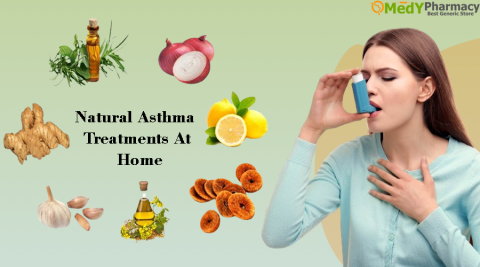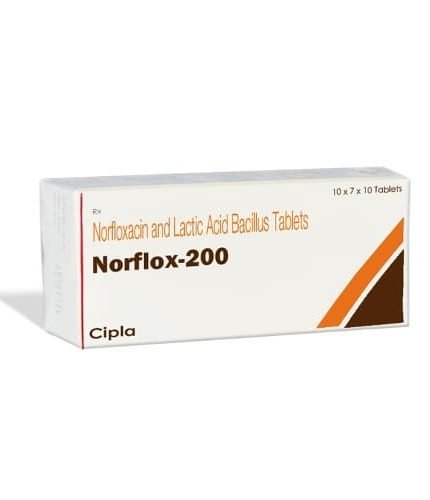Introduction:
Simply put, Sulforaphane is an active plant chemical. This offers numerous health benefits. It can be ingested whenever you eat a vegetable such as broccoli or cabbage. Its health advantages range from healing cancer or asthma to improving heart function.
If you have any queries concerning this substance, please ask. In this post, we will explain the health benefits of sulforaphane. We’ll also see if taking too much will have any negative consequences.
This is produced when glucoraphanin, a molecule found in several vegetables, reacts with myrosinase, an enzyme in humans. This may promote cancer cell death while also reducing edema.
This is used to treat prostate cancer. It is also used to treat hay fever, autism, asthma, liver illness, sunburn, and a variety of other ailments, but there is no clear scientific evidence to back these claims.
What Is Sulforaphane?
Cruciferous plants such as broccoli, bok choy, and cabbage contain sulforaphane, a sulfur-rich chemical. It has been proven to have significant health benefits.
It appears in several foods in the inactive form of glucoraphanin, a plant chemical from the glucosinolate family.
This is activated when glucoraphanin comes into touch with myrosinase, a family of enzymes involved in plant defense.
Myrosinase enzymes are only secreted and activated when a plant is injured. Cruciferous vegetables must be cut, chopped, or chewed for myrosinase to be released and sulforaphane activated.
The largest quantities of these are found in raw veggies. A study discovered that raw broccoli contained ten times more sulforaphane than cooked broccoli.
Steaming veggies for one to three minutes may be the most effective technique to maximize sulforaphane levels when cooking.
Cooking veggies below 284˚F (140˚C) prevents the loss of glucosinolates such as glucoraphanin.
As a result, it is preferable not to boil or microwave cruciferous vegetables. To get the most sulforaphane, eat them raw or minimally heated.
Nutrients
As previously stated, broccoli sprouts are nutrient-dense.
They are high in protein, fiber, vitamins, minerals, and phytochemicals, or bioactive plant molecules. These substances protect plants from the sun and insects while also providing several health benefits to people.
- Calories: 35
- Carbs: 5 grams
- Fiber: 4 grams
- Protein: 2 grams
- Fat: 0.5 grams
- Vitamin C contains 60% of the daily value
- Vitamin A: 10% of the DV
- Calcium: 6% of the DV
One serving of these sprouts contains a high concentration of vitamin C, which is known for its antioxidant and immune-boosting qualities.
They also contain a phytochemical called sulforaphane. This molecule is thought to be responsible for most of the health advantages of these crispy sprouts.
Supplies Essential Nutrients
Every whole food that increases sulforaphane production contains additional nutrients that are likely to contribute to sulforaphane’s health advantages.
Cruciferous vegetables, for example, are high in vitamin K, dietary fiber, and antioxidants, all of which promote health and lifespan.
- Vitamin K improves bone health and regulates blood clotting in your body.
- Eating adequate fiber has been related to a lower risk of cardiovascular disease, type 2 diabetes, and colon cancer.
- Antioxidants are chemicals found in the body that help to minimize oxidative stress and tissue damage. Oxidative stress arises when there are too many damaging chemicals known as free radicals and insufficient antioxidants to prevent them. Antioxidants included in cruciferous vegetables have been related to a lower incidence of cardiovascular disease and hypertension.
While sulforaphane supplements in the form of extracts typically provide a considerably higher dose of sulforaphane than whole foods, they lack other nutrients such as dietary fiber, which are likely to provide additional advantages when consumed whole.
How Does Sulforaphane Form In Our Bodies?
We said in the last section that sulforaphane is produced in your body. There is no nutrient that you can find directly in plants. So, let us try to understand how this molecule is formed.
To create this component in your body, you will need to consume a vegetable such as broccoli, Brussels sprouts, or Bok-choy. Glucoraphanin, a plant-based substance, is now present in these vegetables. This item interacts with an enzyme found in the body. This reaction between the two components contributes to the synthesis of sulforaphane.
Remember, this reaction to the vegetable must be sliced and cut. This is precisely what happens in your mouth when you chew vegetables.
Cooking or steaming does not produce sulforaphane. This is because it requires the enzyme myrosinase, which is naturally present in us. If the vegetables are cooked thoroughly, the reaction may not occur at all.
This is because boiling vegetables at high temperatures degrades the plant’s chemical glucoraphanin in them.
What Are The Consequences Of Consuming Sulforaphane?
This can be found in a range of leafy green vegetables, in addition to those indicated above.
- Antioxidant
This is a natural antioxidant that can neutralize harmful particles that impede the growth of healthy cells. Antioxidants also promote cardiovascular health. According to the journal Natural Library of Medicine, This can lower oxidative stress through phosphorylation. Antioxidants are also beneficial to your complexion.
What exactly can antioxidants do for your skin? In a word, they protect your skin from free radicals and other potentially dangerous substances. What exactly are free radicals on the skin? They are the compounds that cause pigmentation, wrinkles, fine lines, and even creepy skin.
- Chemo protective
As previously stated, sulforaphane contains anti-cancer effects. It specifically prevents carcinogens from attaching and destroying your DNA. Consuming sulforaphane has also been found to reduce tumor growth by inhibiting DNA mutations, which is important for cancer prevention. Some cancer research investigations imply that sulforaphane may cause cancer cells to self-destruct.
- Anti-inflammatory
It has anti-inflammatory effects. Inflammation, particularly inflamed arteries, is a primary cause of cardiovascular disease. As a result, Which is good for your heart.
- Anti-diabetic
It has been shown to lower blood sugar levels by 6.5%, which is great news for diabetics. It also lowers hemoglobin A1C, which is a significant indicator of long-term blood sugar control.
Other potential benefits of eating sulforaphane include skin protection against sun damage, brain protection, improved communication/interaction in autism patients, and a lower risk of osteoporosis, constipation, and obesity.
How Do I Get Sulforaphane in My Body?
To obtain Sulforaphane into your body, look for vegetables that contain glucoraphanin, a plant product. This plant chemical appears to be particularly abundant in cruciferous vegetables. To make sulforaphane, ingest this plant component.
- Broccoli
- Cauliflower
- Cabbage
- Arugula
- Napa
- Brussels sprouts
- Turnips
- Radish
- Carrots
- Bok choy
- Kale
- Watercress
The amount of sulforaphane you absorb from these meals varies according to how they are prepared. This is because heat deactivates the enzyme myrosinase in cruciferous veggies.
Which is produced by myrosinase, completely cooked cruciferous vegetables will not provide as much sulforaphane as raw ones. Fortunately, myrosinase is normally found in the colon, thus even cooked crucifers can stimulate sulforaphane production in the body.
May Slow Cognitive Decline and Aging
Aging is associated with neurodegeneration, a process in which brain and central nervous system cells lose capability.
While there is no cure for these diseases, researchers are looking into how various plant compounds, such as sulforaphane, can help delay aging and its related neurological diseases. This is thought to protect neurons because of its capacity to activate the body’s potent antioxidant pathways.
While preliminary research appears promising, further human studies are needed before recommending sulforaphane supplementation for anti-aging objectives. For the time being, incorporate cruciferous veggies into your diet regularly to reap brain (and other) health advantages.
Making sulforaphane-rich meals
In plants, This is triggered when glucoraphanin and myrosinase are introduced simultaneously. Chopping, mixing, and even chewing activate myrosinase, maximizing sulforaphane’s effects.
Cooking, microwave heating, and boiling all reduce the amount of sulforaphane. Eating these vegetables uncooked promotes optimal sulforaphane absorption. If cooking is necessary, keep it under 284˚F (140˚C) to preserve glucoraphanin. Boiling broccoli is widely regarded as the finest way to cook it. However, raw broccoli is far more nutritious.
Health Advantages of Sulforaphane
Many studies have been conducted to better understand the benefits of sulforaphane. In some cases, the research was carried out on animals, while in others, human trials were conducted. To get a better understanding, let’s look at the benefits of this substance.
- May Prevent Cancer
Without a doubt, cancer will be included on any list of the most terrible ailments. With this condition, cells that create tissues reproduce uncontrollably. It spreads quickly through the human body and can potentially cause death.
Some test-tube investigations have shown that sulforaphane may aid in reducing cancer cell proliferation. Other studies indicate that Sulforaphane can also prevent cancer. It can do so because it stimulates the release of specific antioxidants in the body.
It aids in the detoxification of your body from cancer-causing bacteria and chemicals. The only drawback is that the investigators utilized a high dose of sulforaphane in the experiment. However, it is unknown whether a modest amount of the substance found in vegetables will have the same impact.
- Helps to Improve Heart Function
Several studies in animals and humans have shown that sulforaphane can help avoid a variety of heart conditions. It has been demonstrated to alleviate the symptoms of artery swelling and inflammation, which cause cardiac problems. Based on these findings, scientists believe it can aid in the management of high blood pressure. However, it is unclear whether it will function in the same way for individuals of any age or condition. Sulforaphane’s long-term advantages on the heart are still being studied.
- Can Help to Cure Diabetes
Type-2 diabetes is another serious condition that affects many people. According to certain research, this item can help lower your blood sugar levels. Test research, for example, found that it can assist humans in reducing their fasting blood sugar levels. It also has impacts on increasing insulin synthesis, which helps to regulate blood sugar levels. Animal studies reveal the same findings.
The only issue is that there is now very minimal data accessible on such paths. As a result, it is unclear if it will aid in the long-term control and reduction of diabetes.
- Can Help Cure Asthma?
According to certain studies on sulforaphane, the molecule can help reduce swelling and inflammation of cells and tissues. This feature may also benefit an asthmatic sufferer.
As you may know, the problem is that the airways inflate and become thin. This makes it difficult for the lungs to get enough oxygen.
Scientists believe that sulforaphane can help regulate and prevent asthma symptoms. It promotes the release of various antioxidants in your body, preventing inflammation.
- Is It Beneficial To The Skin?
As previously stated, sulforaphane is known to boost the release of a variety of antioxidants. This substance can help you achieve brighter, softer, and smoother skin. Sulforaphane’s activity causes antioxidants to be released, which assist detox and revitalizing cells. This helps to prevent sun-induced skin damage, as well as skin aging, wrinkle formation, and other impacts.
- Could Help Prevent Brain Damage
A few research have been conducted to investigate sulforaphane’s impact on brain cells. According to studies, it can help prevent brain injury. It aids in the optimization of neurons and prevents long-term harm. An implication that may be drawn from this is that a person may have a lower risk of developing brain problems or a stroke.
Sulforaphane Provides Antioxidant Protection
This is also effective since it can boost the quantity of glutathione5 in your cells. Glutathione is the body’s most significant antioxidant and detoxifying molecule.
All of this points to sulforaphane being a nutrient that can help protect your body against a variety of health issues.
If you’re attempting to conceive, sulforaphane can boost your body’s antioxidants, providing cellular protection for the egg and sperm.
Hormone Balance and Estrogen Dominance
- During your reproductive years, your ovaries create estradiol as their principal estrogen.
- Estrone is a kind of estrogen produced after menopause.
- The placenta produces estriol during pregnancy.
These three forms are subsequently transformed into byproducts known as metabolites, which serve various activities in your body. Some of these metabolites are beneficial, while others have been associated with negative health consequences.
When estrogen is out of balance, it can cause symptoms of estrogen excess, also known as estrogen dominance. Heavy periods, mood changes, sore breasts, and weight gain are all possible symptoms of estrogen dominance. While achieving estrogen balance needs more than just one meal or pill, including sulforaphane-rich items in your diet can be beneficial.
Because sulforaphane aids in phase 2 detoxification, it promotes healthy detoxification and the removal of excess or harmful forms of estrogen by supporting the liver and stomach in doing so. It may also promote healthy levels of more protective types of estrogen, which are connected with a lower risk of breast cancer and greater antioxidant activity.
Sulforaphane and Heart Health
Many of the benefits of sulforaphane for heart health stem from its antioxidant and anti-inflammatory properties. These advantages are another reason why sulforaphane can be so beneficial for women later in life, as estrogen protects against heart disease, while the risk increases after menopause.
Sulforaphane appears to help keep cholesterol levels stable and blood pressure under control. Several studies found that eating more broccoli or sprouts helped people lower their LDL cholesterol. Those who had a diet high in sulforaphane-containing veggies appeared to have a lower risk of heart disease.
Sulforaphane Dietary Supplements
Maybe you enjoy your broccoli roasted. Maybe you have IBS and need to avoid specific vegetables. You may also have difficulty eating enough sulforaphane-rich meals every day. My philosophy is food first, but sulforaphane pills can help you get more of it.
Sulforaphane supplements are available in a variety of formats, including capsules, tablets, and powder. If it’s a food supplement, organic is always preferable because it may include less pesticides. You should also ensure that the supplement has undergone third-party quality testing.
Grow Your Broccoli Sprouts
Drain and rinse the seeds thoroughly in the morning. Put your broccoli sprout seeds into a sprouted.
Every 8-12 hours, properly rinse and drain your seeds with cold water.
On day three, relocate your sprouted to bright light. A suitable position indoors could be near a kitchen window. Rinse and drain once every 8-12 hours.
Your sprouts will be ready to harvest between days 5 and 6. When their leaves are open, they are mostly green.
Sulforaphane-Rich Recipes
If you’re having trouble getting more than a daily serving of cruciferous veggies into your diet, it’s time to get creative. Peppery arugula and radish are sulforaphane powerhouses in the light and colorful Lemony Arugula White Bean and Sunflower Salad.
- Lemony arugula, white bean, and sunflower salad
When you think of cruciferous vegetables, you generally think of nasty, but nutritious, vegetables like broccoli, cauliflower, and Brussels sprouts. Other lesser-known cruciferous standouts include arugula. Another noteworthy crucifer is radish, which has a somewhat spicy flavor and is high in nutrients. This salad can be served as an appetizer or as a plant-based dinner.
- Tart Tahini Brussels sprouts
People are passionate about this beauty, whether they are in love or hatred. We’re prepared to wager that the majority will profess their unwavering loyalty and all the ways they like cooking them. You might even learn some new and inspiring culinary techniques! For the time being, serve these covered in a zesty tahini sauce that can also be used to top grain bowls and salads.
- Cauliflower, White Bean Burgers
Do you know anyone who refuses to eat their broccoli? Here’s a burger recipe that will satisfy even the most discerning palette. Cauliflower, beans, rice, and oats combine to create a vegetable burger that is filling, nutritious, and unforgettable – in the best way. Double the batch and freeze half for later, so you can meet your cauliflower intake throughout the month.
Cooking Methods Affect Sulforaphane Content
- Raw consumption: Eating these vegetables raw is frequently the best method to preserve the maximum levels of sulforaphane.
- Steaming: Light steaming might increase sulforaphane availability; however, overcooking can result in considerable losses.
- Boiling is generally not suggested since it can result in a significant loss of sulforaphane owing to leaching into the water.
What factors should you examine before taking sulforaphane supplements?
- Medical consultation: Before beginning any supplement, contact a healthcare practitioner, especially if you have a medical condition or are using medications.
- Cost vs. benefits: Supplements can be more expensive than natural sources. Weigh the expense against the potential benefits and your specific health requirements.
Sulforaphane supplements are a convenient choice, but they should be taken sparingly and in conjunction with a healthy diet.
Sulforaphane: How Does It Work?
Although the specific mechanism by which sulforaphane operates is not yet entirely understood, researchers have made significant progress in understanding its potential advantages.
This is a chemical present in cruciferous vegetables like broccoli, cauliflower, and kale. It has been demonstrated to offer numerous health benefits, including lowering the risk of certain malignancies and improving heart health.
One of the most promising potential benefits of this is its capacity to boost the body’s production of antioxidant enzymes.
These enzymes aid in the protection of cells and the reduction of inflammation, both of which are thought to contribute to the development of autism. While additional research is required to completely understand the effects of sulforaphane on autism, early studies have proven potential.
Last Words:
This is extremely beneficial to our bodies in several ways. Studies reveal that it can assist in curing a variety of problems, but this is not obvious. To get more of this item, add vegetables from the list above to the article.
Medypharmacy is the top canned Sulforaphane provider, offering a diverse line of Sulforaphane products.























